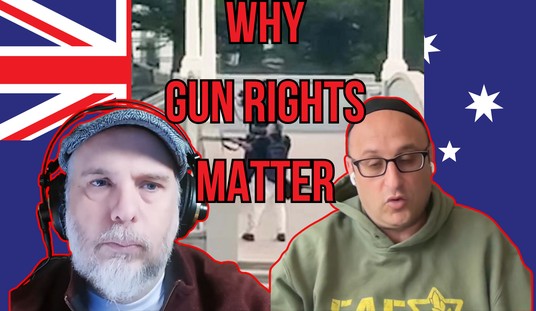Multiple “threats” arrayed downrange at the Marana Shooting Club faced five of us. “We’re not duck hunting here today,” instructor Ed Chavez barked. “Keep those muzzles directed toward the threats.”
By the end of a day spent practicing shotgun handling drills, reloading, and sling techniques and firing lead pellets and slugs downrange we had learned a lot about handling shotguns for self defense.
Chavez, owner of R&A Tactical in Tucson, is a Marine Corps veteran, served on security details for two United States presidents, and is now retired from the Tucson Police Department. He has years of experience training military troops, law enforcement officers and civilians to be better, safer shooters. Using proven tactical methods developed by law enforcement and military experts, Chavez teaches basic and advanced tactical shooting with handguns, long rifles and shotguns.
Tactical shotgunning is no recreational sport. It’s training for the kind of life-or-death altercation every gun owner prays will never happen, but if ever it does, the lives on the line are your own or those of loved ones. Common sense dictates that when a person decides to take personal responsibility for their own defense, then that person needs to have the training to do it right. That doesn’t mean tactical firearms training isn’t as challenging and as fun as learning to be a good hunter.
Good, safe bird hunters don’t need to learn tactical shotgun handling. Many, like this writer formerly believed, think themselves capable of defending their home and family with the same shotguns we’ve lugged out to duck blinds, sloughs, fields and woods.
For most civilians the tactical shotgun will be limited to defense in the home or a place of business. Few, other than law enforcement officers and security squads will ever carry a “cruiser ready” shotgun in a rack on the dashboard of a car. It’s just not practical for many reasons, and why many of us own handguns. That doesn’t discount the possibility of some kind of natural disaster or civil unrest making it a wise choice to take a tactical shotgun along bugging out.
I managed to knock down a few Canadian honkers, pheasants and ducks, even tagged a deer more than 40 years ago with an old Remington pump. I don’t recall a shotgun with a sling on it until acquiring a short-barreled home defense 12-gauge. The sling is nice to have, but its usefulness never really sunk in until I learned to use it correctly.
Hunters often miss one more shot at a honker or a ringneck because it took too long to reload. After a little practice I can now smoothly reload one round into an empty shotgun, keeping the business end directed toward the threat, and fire on target in about two seconds. That’s not lightning fast, but I expect that time to improve. Chavez taught us to do this smoothly, and like the professional he is, Chavez knows that once you learn to perform smoothly, speed and consistency follows automatically.
“I’d much rather see you working smoothly than trying to go fast,” Chavez said. “Smooth is fast.”
Not convinced that a few dollars spent on training is worth it? Next time you go out to the range have a friend time you from the sound of the click that indicates the shotgun is empty until you have loaded and fired one more round, successfully hitting the target. Make it realistic (remember, this is a tactical scenario), have the friend load two to five shells without telling you how many are in the tube. Assume there is at least one more “threat” than there are rounds in the gun.
Most testing themselves will be surprised by how long it takes, and more surprised at how many shells get dropped without making it into the gun. If you cannot accomplish this safely and smoothly without waving the shotgun all over the landscape, then a Tactical Shotgun course is in order. Even if you never need to use the techniques of tactical training, you will be more confident as a gun handler.
Safety, just as it always is during R&A Tactical training courses, is a primary requirement while hunting. The folks I hunted with generally kept loaded shotguns pointed skyward because that was the safest direction in case of an accidental discharge. Few hunters accidently shoot a game animal, but there are many recorded instances of shooters accidently shooting their partner or a person on the other side of a wall. Tactical shotgun training develops a heightened situational awareness for added safety.
Chavez warned about not “muzzling” each other when going into a shooting stance from the three different slung positions or while reloading and moving. Throughout the day he reinforced our awareness of all the basic safety rules that apply when working with firearms. None of the five of us are firearms neophytes, but we all discovered that we could improve our awareness of our surroundings. We were steadily learning good information, developing practical skills in a safe environment, and having a good time.
“It doesn’t matter if you’re a novice or an expert.” Chavez said. “I can teach you to be a better shooter even if you’re already a better marksman than I am.”
I’ve seen Chavez shoot. He doesn’t brag about his marksmanship, but if there’s going to be a firefight, you want to be on his side.
The shotgun is a potent, yet relatively simple to operate self-defense tool, especially in the larger gauges at close range with buckshot and slug loads. Completing the R&A Tactical Shotgun course teaches knowledge that makes a hunter dangerous to uninvited home intruders—without endangering yourself, your family or your neighbors.
How do you decide what to load into a home defense shotgun? Would you really want to fire a one-ounce lead slug with an effective range of 125 to 150 yards through a kicked opened door with your neighbors asleep in their house 200 feet away? How big a pattern will double-ought buckshot spread to beyond about 20 yards? After an R&A Tactical Shotgun course you’ll know how to pattern a shotgun and the legal reasons why you need to. It’s solid, logical reasoning that will stand up in a court of law.
Should you be left no option but to fire your shotgun in self-defense, expect to have to answer questions about why you fired a particular type of ammunition, at what range, and why you fired that number of rounds, possibly in a court of law. If you must defend yourself in the aftermath of a shooting it is vitally important that any statements or testimony be truthful and beneficial to yourself and the prosecuting attorney who brings charges against the bad guys. One of the more subtle benefits of Chavez’s training is that he teaches you situational awareness while you train to smoothly and safely operate your tactical shotgun. The result is that you become a better shooter and a better witness. Your job is to protect yourself and your family. Catching bad guys is a police job and you can help by being a good witness.
My home defense shotgun is a bare-bones12-gauge pump. I kept it loaded with alternating buckshot and slugs, including one in the chamber. After learning Chavez’s methods, those slugs are going into the loops on the sling and being replaced in the tube with buckshot. Slugs are for longer ranges than found in most homes, and they require more accurate placement than a load of shot. If I can see a target, I can put buckshot on the center of mass and score hits with every shot out to 20 yards. I could probably hit CofM with slugs most of the time, but a single miss with a slug could have dire results at close quarters. In a tactical situation you make the odds as much in your favor as you can.
The sound made by working the slide to chamber a round in a 12-gauge pump shotgun is about the scariest sound an intruder doesn’t want to hear echoing down a darkened hallway. An uninvited interloper in my home is going to hear that first round being racked into the chamber, and I know how to reload that extra shell instantly. An armed confrontation that ends with the bad guy leaving the premises with you and your loved ones unharmed and no shots fired is a victory. You don’t train to be the loser in a gunfight.
I used a no-frills Mossberg 500 pump for the R&A training with a basic sling and an elastic five-round shell carrier on the stock. No rifle sites, lasers, flashlight attachments, pistol grips or light switches. All five of us used pump shotguns. A couple shooters used shotguns tricked out with all the black-gun bells and whistles. The type of shotgun and the accessories chosen is a personal choice each shooter must make. Keep in mind that a shotgun with too many complex gadgets can become cumbersome to operate smoothly.
Chavez, a Glock-certified gunsmith, sells what he believes are the best firearms and accessories for tactical shooting. Based on his experience he offers sage advice on what kind of gun best suits your needs and what accessories to add. Regardless of what you end up using, he excels at teaching you to be a better shooter.
The sling and handling techniques Chavez teaches can be practiced at home with an unloaded weapon or at the range for live-fire exercises. All the shooting drills can be practiced with light recoil sporting loads and birdshot, but it is important to get some practice with slugs and buckshot. The recoil from shooting slugs is a bit heavier than sporting loads and the resulting shot patterns from buckshot fired out of short tactical barrels is different than from long-barreled hunting guns.
The final exercise of the day was a variation of one the Arizona P.O.S.T. (Peace Officer Standards Training) drills all Arizona LEOs complete prior to being certified to wear a badge. It’s a zigzag course covering about 140 yards that must be completed in less than 70 seconds. This drill requires firing 10 shotgun rounds at seven targets while reloading on the move and while behind cover, then transitioning from the empty shotgun to a pistol for a second shot at the last target. Drop a shell while reloading, miss a target, or run out of ammo without taking out all the threats are all disqualifying gigs. Just to keep it interesting, the fourth target requires firing from your support side, meaning a left-handed shot by a normally right-handed shooter, or vice versa.
I’m pushing 60 years of age. It took me two attempts to finish the drill. I hit all the targets, but I broke from cover with an unloaded shotgun the first time through. My qualifying time of 58 seconds was not the fastest, nor the slowest time posted. It was a challenge to successfully complete the drill as my heart and breath rate picked up from the exercise. After participating in multiple R&A Tactical firearms training sessions for handgun and shotgun, I am better prepared and more confident about my ability, should the need ever arise, to defend myself.
For more information on R&A Tactical training classes, visit their website at www.ratacticalaz.com or visit the store at 6811 N. Thornydale Road, Suite 155 in Tucson, phone number (520) 408-8223.








Join the conversation as a VIP Member